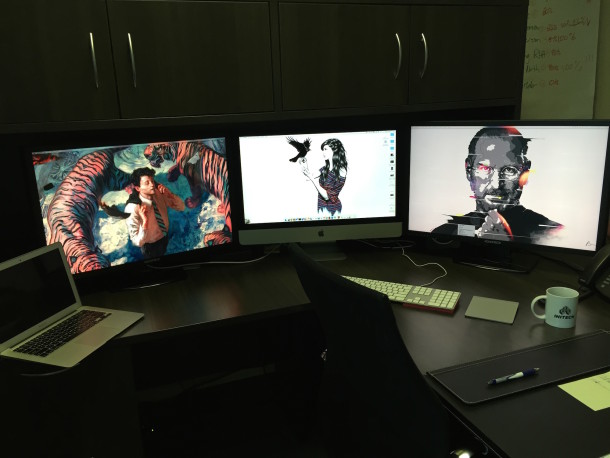Magic Workstation Mac
Im trying to make magic workstation work under snow leopard. Magic worskation is a client for playing card games, such as magic the gathering, online. I've already installed wine and magic workstation. But i was told that i needed to use winetricks to install some fonts (corefonts), so workstation would be fully functional. But when i open winetricks and perform a seacrh for corefonts, i have only a blank window, nothing shows up. Can any1 help me?./winetricks corefonts. You will have to run the program from Terminal (Applications->Utilities->Terminal.
So I'm going to get a laptop for college and leaning towards getting a mac. However, I dont think Magic Workstation is compatible with the mac. Are there any.

You will have to change the directory to where you downloaded winetricks to. James McKenzie MIMIC. Either you are running a 3rd party program that is not supported here. Or something is messed up with your Winetricks version if shows a blank Window.
Magic Workstation is a powerful tool intended for collectible card players to easily manage their collections, design winning decks and test it on virtual card table. Magic Workstation, Card Management and Deck Testing for Magic the Gathering and other CCG Players, Online Play. Nero 7 Premium Serial Number.

If you have Zenity installed, then running Winetricks should have a GUI, other wise you have to use it command line. If you are using something like Wineskin, WineBottler (including its Wine.app), PlayOnMac, etc etc. And not normal Wine, then you need to go to those specific websites to get help. Normal Wine on Mac OS X is built from source and run all command line. MacPorts or Fink can make the compiling much easier, but its still command line.
Without knowing more of what you actually have, its not easy to tell you where to go for help. If you have Zenity installed, then running Winetricks should have a GUI, other wise you have to use it command line. If you are using something like Wineskin, WineBottler (including its Wine.app), PlayOnMac, etc etc. And not normal Wine, then you need to go to those specific websites to get help.
Normal Wine on Mac OS X is built from source and run all command line. MacPorts or Fink can make the compiling much easier, but its still command line. What version is MacPorts? James McKenzie SpawnHappyJake. Just run through terminal.
So that translates to pressing Ctrl + Alt + T to open a terminal, if in Linux. If in Mac, then open Finder, go to Applications, then Utilities, and find Terminal. If in Mac, drag Terminal into your Dock for future easy access.
You'll be glad you did. So get terminal open, and type in wine followed by a space. Don't hit enter yet.
Open your file browser (let terminal just chill for a while), whether the file browser be Finder or Nautilus or whatever. Navigate to your executable that you are trying to get to work with wine. It will be located in your hidden dot wine folder. So, if in Linux, go to /home/[your user name], and the hidden dot wine folder will be in there. But it's hidden. If using Nautilus as your file browser, hit Ctrl + h to reveal hidden files and folders. You should then see the '.wine' folder (if in Nautilus). Garador Garamatic Manual.
If in Mac, then your dot wine folder will be in /Users/[user name]. It will still be hidden if in Mac.
To get Finder to show hidden files and folders, you have to go into terminal and tell it to do so. Mac doesn't let you have more than one terminal open, so you'll have to backtrack a little and backspace off the 'wine ' to have a bare terminal to tell it to show hidden files and folders if you haven't yet already. Here's what you type into Mac terminal to get Finder to show hidden files and folders: defaults write com.apple.Finder AppleShowAllFiles YES (hit enter) and then this: killall Finder (hit enter) Go in the dot wine folder. Then go into drive_c. Then navigate to where the program is installed. Probably in the Program Files folder.
Find the executable file and drag it into terminal after the 'wine '. Then give a space after the path to the executable, then a '&>' then another space, then a path to where you want the debug kept. You could do '[path to user folder]/Desktop/MW_in_WINE_Debug.txt'. So what you type in terminal might look like this: wine /Users/MIMIC/.wine/drive_c/Program Files/Magic/workstation.exe &>/Users/MIMIC/Desktop/MW_in_WINE_Debug. Patch For Yuri Revenge. txt Alternatively, instead of doing a '&>[path to text file]', you could leave that out, and just let it appear in terminal.